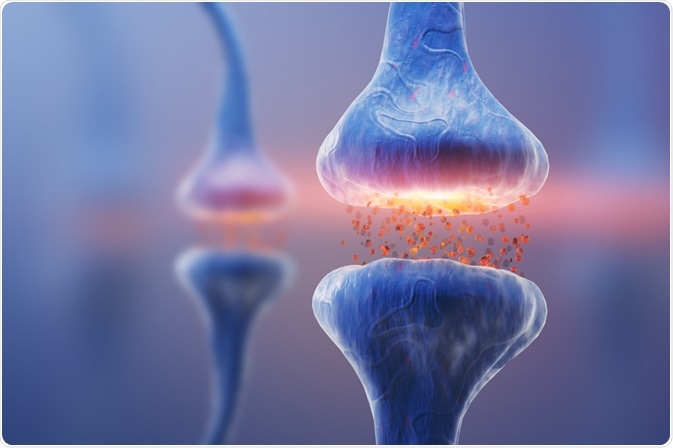Parkinson’s disease (PD) is a progressive condition that affects the nervous system, particularly the part of the brain responsible for movement. Whilst PD has no known cause, it has previously been linked to mutations in the VPS35 gene.

KateStudio | Shutterstock
Parkinson’s disease is a neurodegenerative condition that affects the dopamine-producing brain cells in the brain area dubbed as the substantia nigra. The disease leads to various movement problems, including tremor, limb or muscular rigidity, bradykinesia, imprecise movements, and gait or balance problems.
An estimated 10 million people are living with Parkinson’s disease across the globe. In the United States, about one million people have the disease, with 60,000 Americans being diagnosed each year. However, some patients go undiagnosed until advanced stages of disease are present.
Men have a 50% higher risk of developing the disease compared with women. In most cases, symptoms begin after the age of 50 years. However, 4% to 5% of patients experience symptoms before the age of 40. When the symptoms appear between the ages of 21 and 40, it is referred to as Young-onset Parkinson’s disease.
Parkinson’s disease etiology
To understand Parkinson’s disease, it is important to understand how neurons work. The brain controls all processes in the human body. Nerve cells (neurons) send and receive nerve impulses between the brain and all parts of the body. These impulses, or messages, help the body communicate with the brain as its control center.
The neurons contain dendrites, which are branching arms. They serve as antennae to pick up signals and messages. Once a message is received, the neuron’s axon carries the messages away from the body of the cell. In this way, nerve impulses travel through neurons, from the axon of one nerve cell to the dendrites of the next.
The travel of the messages from one neuron to another is made possible, thanks to a tiny gap between them called a synapse. For a message to cross the gap, neurotransmitters (chemical messengers) are needed.
In people with Parkinson’s disease, there is an abnormally low level of dopamine, which is one of these chemical messengers that sends signals around the body to control movement. The low dopamine levels in Parkinson’s disease result from death of dopaminergic neurons, a type of nerve cells, in the substantia nigra.
When there are low levels of dopamine, people find it difficult to control their movements, including simple activities like walking.
How is VPS35 involved in Parkinson’s disease?
Aside from environmental and genetic factors associated with the development of Parkinson’s, gene mutations have appear to play an important role in the progression of this neurodegenerative disease.
Recently, a new gene has been associated with PD. Identification of the VPS35, or vacuolar protein sorting 35 homolog, gene has provided new insights into the disease process involved in PD. Various studies have shown that the VPS35 gene is associated with late-onset, autosomal dominant familial Parkinson’s disease.
Autosomal dominant inheritance is also seen with alpha-synuclein-SNCA and LRRK2 genes, which have also been associated with PD. Autosomal recessive inheritance of Parkin, DJ1, or PINK1 genes has also been associated with PD.
Although the exact mechanism by which PD develops remains unclear, understanding more about the gene can lead to the development of proper therapeutic strategies.
Sources:
- https://www.parkinsonassociation.org/facts-about-parkinsons-disease/
- https://www.nia.nih.gov/health/parkinsons-disease
- www.ninds.nih.gov/…/Parkinsons-Disease-Information-Page
- https://www.ncbi.nlm.nih.gov/pubmed/28222538
- https://www.sciencedirect.com/science/article/pii/S0896627314010812
- https://www.ncbi.nlm.nih.gov/pmc/articles/PMC5438477/
Further Reading
- All Parkinson's Disease Content
- What is Parkinson’s Disease?
- Parkinson’s Disease Pathophysiology
- Parkinson’s Disease Diagnosis
- Parkinson’s Disease Treatment
Last Updated: Nov 15, 2018

Written by
Angela Betsaida B. Laguipo
Angela is a nurse by profession and a writer by heart. She graduated with honors (Cum Laude) for her Bachelor of Nursing degree at the University of Baguio, Philippines. She is currently completing her Master's Degree where she specialized in Maternal and Child Nursing and worked as a clinical instructor and educator in the School of Nursing at the University of Baguio.
Source: Read Full Article
